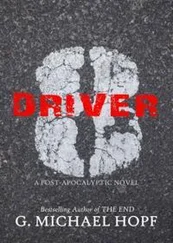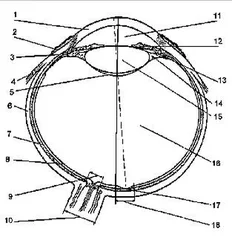State of New Jersey Motor Vehicle Commission - Driver Manual
Здесь есть возможность читать онлайн «State of New Jersey Motor Vehicle Commission - Driver Manual» весь текст электронной книги совершенно бесплатно (целиком полную версию без сокращений). В некоторых случаях можно слушать аудио, скачать через торрент в формате fb2 и присутствует краткое содержание. Жанр: sci_state, Юриспруденция, sci_transport, на английском языке. Описание произведения, (предисловие) а так же отзывы посетителей доступны на портале библиотеки ЛибКат.
- Название:Driver Manual
- Автор:
- Жанр:
- Год:неизвестен
- ISBN:нет данных
- Рейтинг книги:4 / 5. Голосов: 1
-
Избранное:Добавить в избранное
- Отзывы:
-
Ваша оценка:
- 80
- 1
- 2
- 3
- 4
- 5
Driver Manual: краткое содержание, описание и аннотация
Предлагаем к чтению аннотацию, описание, краткое содержание или предисловие (зависит от того, что написал сам автор книги «Driver Manual»). Если вы не нашли необходимую информацию о книге — напишите в комментариях, мы постараемся отыскать её.
Driver Manual — читать онлайн бесплатно полную книгу (весь текст) целиком
Ниже представлен текст книги, разбитый по страницам. Система сохранения места последней прочитанной страницы, позволяет с удобством читать онлайн бесплатно книгу «Driver Manual», без необходимости каждый раз заново искать на чём Вы остановились. Поставьте закладку, и сможете в любой момент перейти на страницу, на которой закончили чтение.
Интервал:
Закладка:
* Shift workers
* Commercial drivers
Communicating and driving
Communicate with other motorists by all available means and signals. A motorist should always stay in the lane that shows where he/she intends to turn. Turn signals (hand signals) allow a motorist to tell other motorists what he/she is going to do. Another good method is catching other motorists’ eyes. It may be necessary to tap the horn to warn other motorists. At night, a quick flip of the headlights from low to high and back to low might be helpful.
A motorist should always be patient in town or city traffic and try not to make quick turns or lane changes. Do not let rush-hour traffic become irritating. Be alert and drive defensively. Always use good judgment in stopping, starting and turning. Knowing all traffic rules, signs and signals is helpful. If a motorist must pull off the road, he/she should always turn on the vehicle’s emergency flashers (hazard lights).
Keep a safe distance/Do not tailgate
A motorist should always keep a safe distance from other vehicles on the road so that he/she has plenty of time to react to emergencies. Tailgating refers to following too closely behind a vehicle directly in front. This is a common cause of accidents. Tailgating can cause a series of rear-end collisions when many vehicles are too close together. There should be plenty of space between a motorist’s vehicle and others on all sides. A motorist should stay in the middle of the lane and make sure there is enough room ahead to stop or pass safely.
Keep safe distance/Do not tailgate
One car length of distance per each 10 mph
One Car Length
Although there is no perfect rule for following distance, the rule of thumb most often used is to keep one car length back (about 20 feet) for each 10 miles per hour of speed. At high speeds or in bad weather, following distances should be increased.
Three-seconds-plus rule
Since most people have trouble judging distances, the three-seconds-plus rule to determine safe distance may be easier to use. It is useful at any speed.
* Choose some fixed object ahead of the vehicle in front. The object may be a sign or a tree. Make sure the object does not distract attention from driving.
* As the vehicle in front passes the object, begin counting seconds (one thousand-one, one-thousand-two, one-thousand-three).
* If it takes at least three seconds before the vehicle passes the object, a motorist should have enough distance for a sudden stop.
* Practicing safe space management/following distance is the ability to stop a vehicle safely and smoothly in the event the vehicle in front stops.
* Stopping Distance = Perception Distance + Reaction Distance + Braking Distance.
* By keeping a foot near the brake, a motorist can reduce reaction distance.
* Time and distance relationships are designed for the best driving conditions.
* It should be noted that heavier vehicles may take longer to stop.
Try the rule while driving. It can help a motorist develop good judgment for proper following distances. During bad weather, the time interval should be increased to four or more seconds.
Following Distances
While keeping the proper following distance in traffic, the motorist should always know the condition of his/her vehicle’s brakes. Test them often. Make sure of the distance it might take to stop. This is very important on wet roads and where there is snow or ice. A motorist should always increase following distance with poor road conditions.
Minimum Safe Following Distance (in car lengths)
Road condition/20 mph/30 mph/40 mph/50 mph
Ideal/2 car lengths/3/4/5
Wet pavement/4 car lengths/6/8/10
Gravel/4 car lengths/6/8/10
Packed snow/6 car lengths/9/12/-
Ice/12 car lengths/18/-/-
Changing lanes and passing
Using the proper lane is an important part of defensive driving. Do not straddle
a lane. Be alert to traffic behind. When a lane change must be made, look at the rearview mirror. Glance behind to check blind spots. Always signal lane changes. Before passing a vehicle or changing lanes, keep the following points in mind:
* Only pass or change lanes when necessary.
* Only pass or change lanes if it can be completed without speeding.
* Keep a safe following distance; do not tailgate.
* Check traffic ahead and behind.
* Only pass when signs and pavement markings permit.
* Signal every lane change.
* Signal your return to the right lane.
* Return to the right lane when well ahead of the vehicle that was passed. (A good indication that it is safe to return to the right lane is when the vehicle that was passed is visible in the rearview mirror.)
* Cancel the turn signal.
Passed By Another Vehicle
When a motorist is passed by another vehicle, he/she must be careful. Stay in the proper lane and slow down to make the pass easier for the other motorist. Return to normal speed after the passing vehicle is well ahead (N.J.S.A. 39:4-87).
Road conditions
Wet Roads
Drive more slowly on wet roads. Stopping and turning should be completed with great care. The three-seconds-plus rule should be increased to four or more seconds. Quick turns or changes in speed may cause a vehicle to skid.
Road surfaces are the most slippery during the first few minutes of a rainfall. When driving through a water puddle, a motorist should test the brakes by pumping them. This will also help to dry the brakes. Speed should be decreased when passing through water puddles, especially those deeper than the tread of a tire.
Hydroplaning
Wet road surfaces can cause tires to hydroplane, or ride up on a film of water, starting at about 35 mph, which could cause a motorist to lose control of his/her vehicle. Chances of hydroplaning increase as speeds increase. After 55 mph, tires may totally leave the road surface. If tires totally leave the road surface, braking is virtually impossible, and turning is not possible. A gust of wind, a change in road level or a slight turn can create a skid if a vehicle is hydroplaning. To avoid hydroplaning, do not drive on bald or badly worn tires, and slow down when heavy rain, standing water or slush is present. In a heavy rainstorm, try to drive on the highest point of the road. For example, use the center lane on a multiple lane highway, when available.
Snow and Ice
Winter driving has special dangers, including longer hours of darkness, fog, rain, snow, sleet and ice. Each of these increases the possibility for an accident. A safe motorist is prepared for these types of situations.
Before driving in cold weather, start the engine and let it warm up according to manufacturer directions. All snow and ice must be removed from the entire vehicle. New Jersey law states that a motorist is responsible for any ice that flies from his/her vehicle and causes death, injury or property damage (N.J.S.A. 39:4-77.1). Always make sure the vehicle has the proper type of windshield washing fluid.
In snow and ice conditions, a motorist should take precautions and get a feel for the road. Gently applying the brakes while driving slowly will allow a motorist to find out just how slippery the road is. This will also allow the motorist to judge how fast the vehicle can go and still stop safely. A vehicle will skid if a motorist:
* Accelerates too quickly.
* Turns too fast.
* Brakes improperly.
Motorists who have a vehicle with antilock brakes (ABS) should keep a foot on the brake pedal and not pump the brakes. Conventional disc and drum brakes require firm, steady pressure on the brake pedal. Hitting the brakes too hard may cause the wheels to lock. If the brakes do lock, release the brake pedal and then immediately reapply with slightly less pressure. This process should be repeated with less and less pressure on the brake pedal until the vehicle is under control. Snow tires help driving during the winter months by providing better traction for more controlled starting, steering and stopping. Snow tires do not provide good traction on ice. Tire chains are the best traction on ice and in hard-packed or deep snow. In New Jersey, motorists may use studded snow tires between November 15 and April 1 (N.J.S.A. 13:20-15.2g).
Читать дальшеИнтервал:
Закладка:
Похожие книги на «Driver Manual»
Представляем Вашему вниманию похожие книги на «Driver Manual» списком для выбора. Мы отобрали схожую по названию и смыслу литературу в надежде предоставить читателям больше вариантов отыскать новые, интересные, ещё непрочитанные произведения.
Обсуждение, отзывы о книге «Driver Manual» и просто собственные мнения читателей. Оставьте ваши комментарии, напишите, что Вы думаете о произведении, его смысле или главных героях. Укажите что конкретно понравилось, а что нет, и почему Вы так считаете.









![Nicholas Timmins - The Five Giants [New Edition] - A Biography of the Welfare State](/books/701739/nicholas-timmins-the-five-giants-new-edition-a-thumb.webp)

